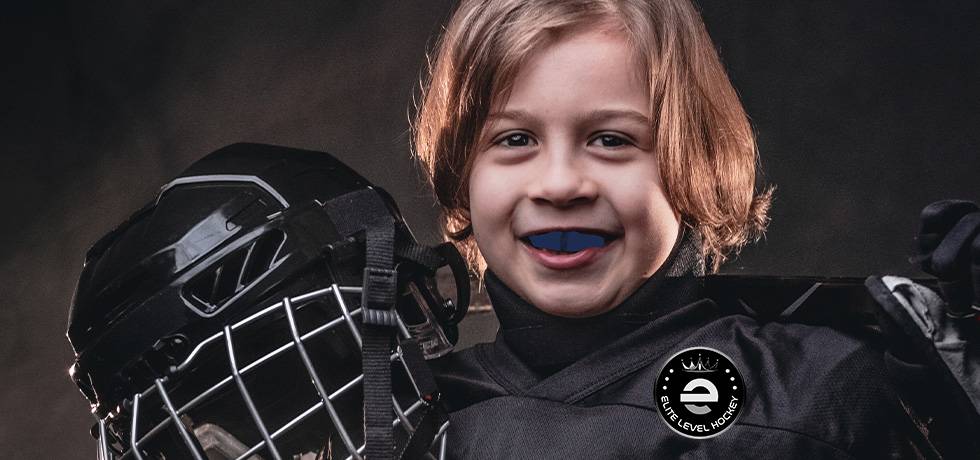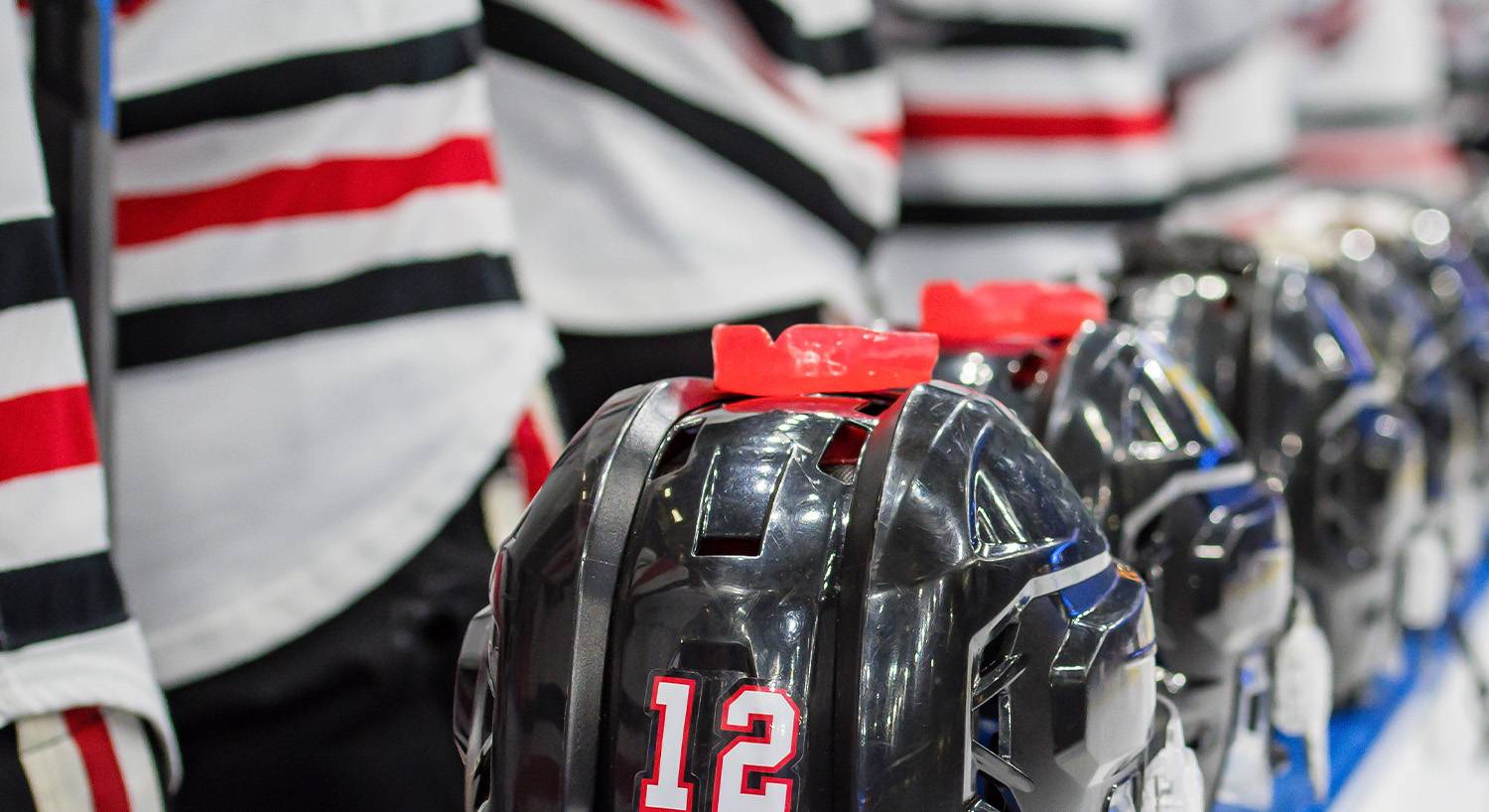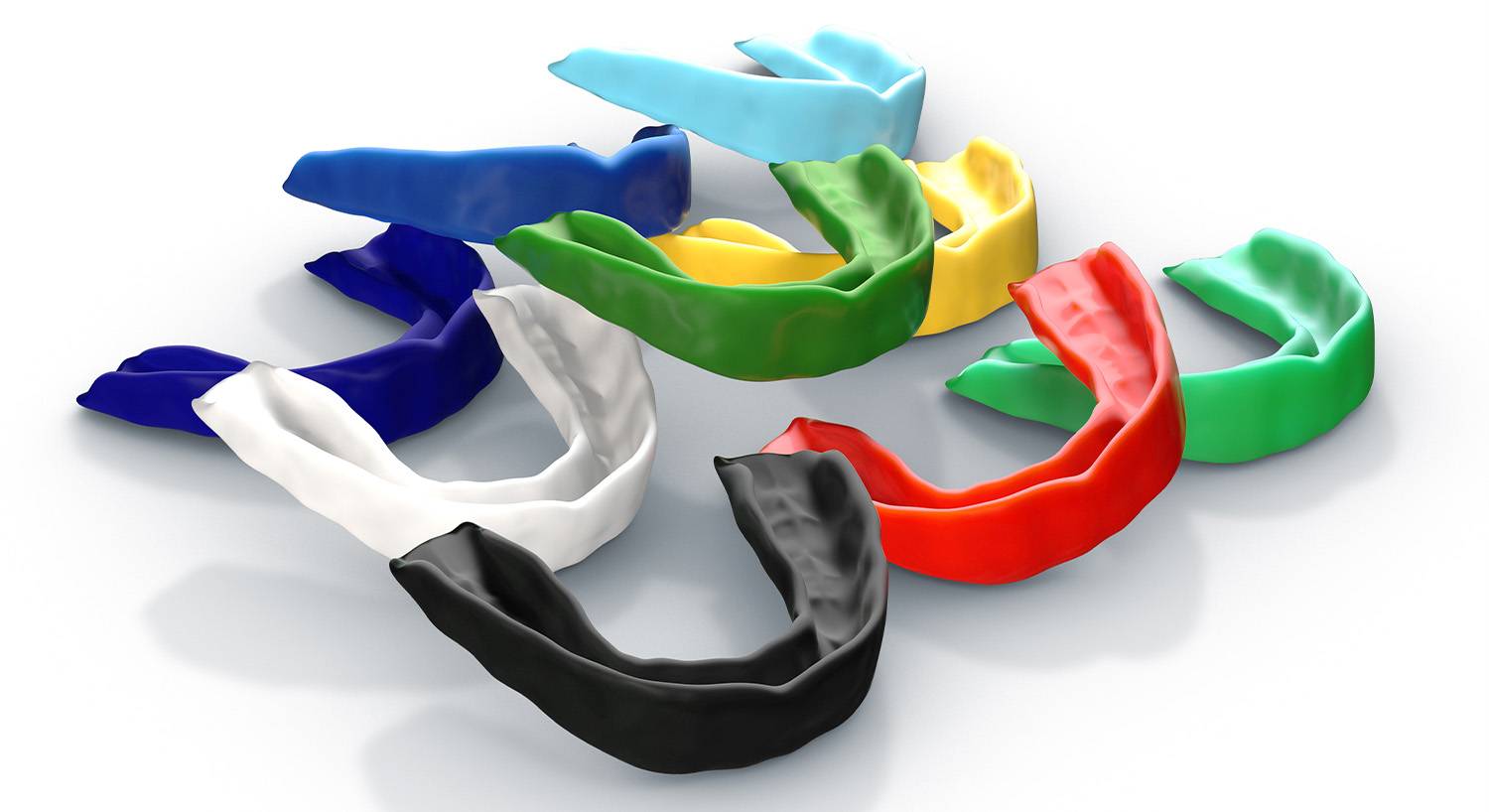In hockey, every piece of equipment tells a story. Skates and sticks are prized for performance. Helmets and pads symbolize safety. But the mouthguard often chewed, forgotten, or left at the bottom of a bag is at the center of a growing debate. Are they essential protection, or just another piece of plastic players tolerate?
The answer depends on where you play. In Ontario and Manitoba, mouthguards are non-negotiable: every player, every practice, every game. In Saskatchewan and parts of British Columbia, they’re recommended but not required. In Northern Ontario, most leagues leave them optional, though the NOJHL enforces them. And in the United States, USA Hockey mandates colored internal mouthpieces for youth players starting at age 12.
USA Hockey’s Rule 304(f) states:
“All players, including goalkeepers, in the 12 & under (Youth and Girls’) through Youth 18 & under (including High School) and Girls’ 19 & under age classifications are required to wear a colored (non-clear) internal mouthpiece that covers all the remaining teeth of one jaw, customarily the upper.”
The rule even outlines enforcement:
“For the first violation of this rule, the team shall be issued a warning. A misconduct penalty for an equipment violation shall be assessed to any player or goalkeeper of that team for a subsequent violation during that game.”
Local associations make clear the rule isn’t optional. As one policy states:
“Players in age groups 12U and above, in both youth and girls classifications, are required to wear mouthpieces per Rule 304f. This is a USA Hockey rule and may not be waived by a local league.”
For parents and players, that patchwork of rules across organizations raises questions: why is one league so strict while another leaves the choice up to the athlete?
For decades, the mouthguard has been seen as an optional piece of hockey gear: a plastic shield to protect teeth, maybe a jaw, but little more. But emerging research about concussion prevention and growing concerns over microplastic exposure are starting to shift the conversation. The once-simple decision of whether to wear one is becoming a complicated question for players, parents, and governing bodies across the sport.
The debate isn’t new, but the science is evolving. Some medical experts argue that mouthguards may help reduce the risk of concussions by absorbing shock during impacts, especially in collisions involving the jaw. While research hasn’t produced unanimous conclusions, a number of recent studies suggest that players who consistently wear mouthguards are less likely to suffer concussions than those who don’t.
One 2023 study in youth hockey found that players who consistently wore a mouthguard had a 28% lower concussion rate and 57% lower odds of concussion compared with non-users. The researchers concluded: “Policy mandating use should be considered in youth ice hockey.”
Still, not all experts are convinced. “We’re seeing mounting evidence that mouthguards can be part of a broader concussion-prevention strategy,” said Dr. Francella, a sports medicine physician. “They’re not a magic fix, but they do appear to reduce risk in certain types of impacts.”
Adding another wrinkle, researchers have begun to examine how mouthguards themselves may affect health. Most are made from thermoplastic materials, and players often chew on them for long stretches. That can release microplastics, tiny fragments of plastic now found everywhere from oceans to human blood samples.
“Anytime athletes are chewing on equipment, there’s a chance of ingestion,” said Dr. Francella. “It doesn’t mean we should ban mouthguards, but it does mean we need to start thinking about safer designs and materials.”
For parents, that creates a new dilemma: weighing the potential concussion-prevention benefits against questions about long-term microplastic exposure.
The conversation is far from settled. As concussion awareness grows and environmental health research develops, governing bodies may soon be forced to revisit their rules.
A mouthguard may be the smallest piece of equipment a hockey player wears, but the debate around it touches some of the sport’s biggest issues: safety, culture, parental trust, and the science of the unknown.
What was once just a piece of plastic to protect teeth could end up reshaping how hockey defines player safety in the years ahead.



